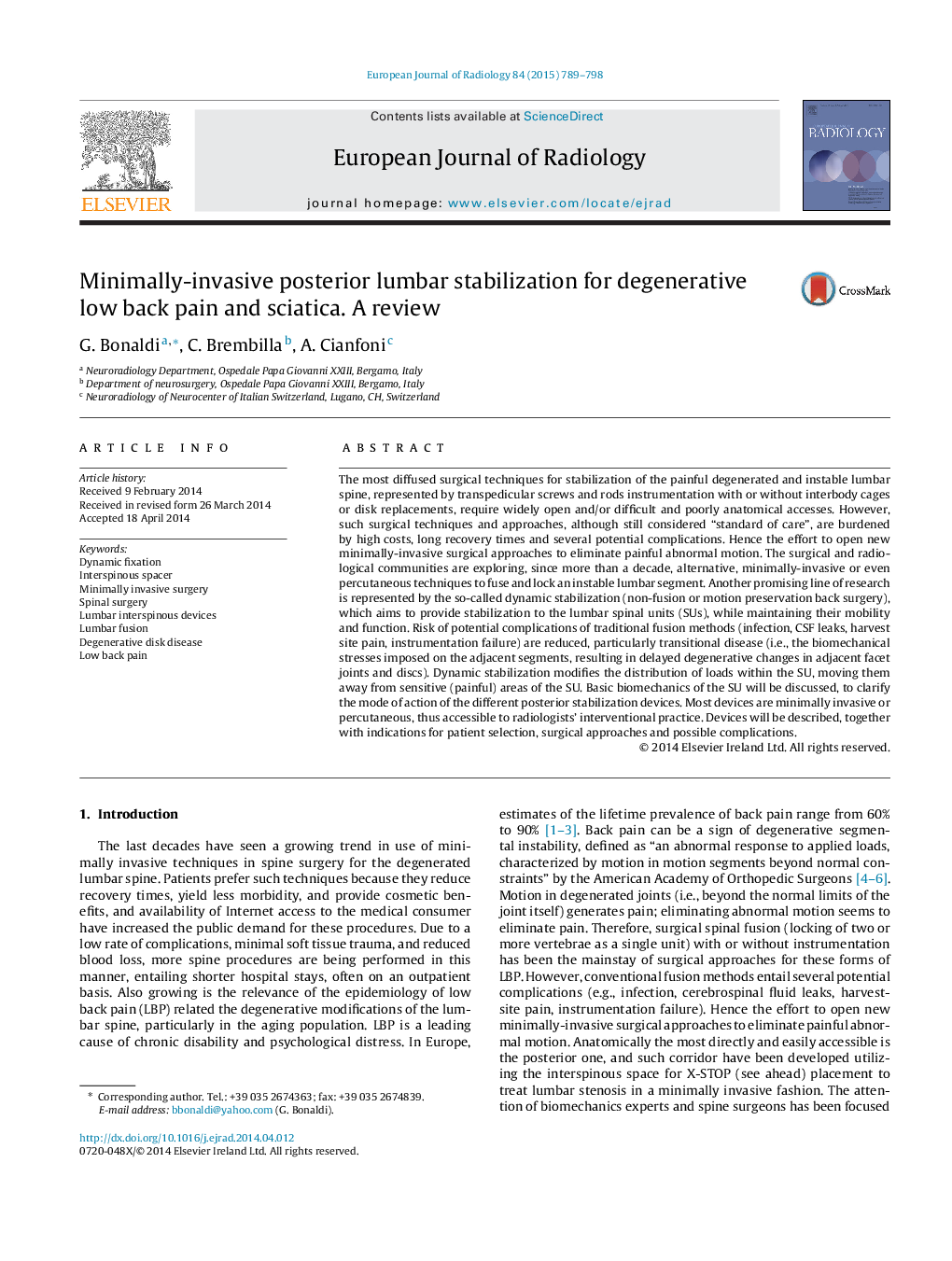| کد مقاله | کد نشریه | سال انتشار | مقاله انگلیسی | نسخه تمام متن |
|---|---|---|---|---|
| 4225403 | 1609754 | 2015 | 10 صفحه PDF | دانلود رایگان |
The most diffused surgical techniques for stabilization of the painful degenerated and instable lumbar spine, represented by transpedicular screws and rods instrumentation with or without interbody cages or disk replacements, require widely open and/or difficult and poorly anatomical accesses. However, such surgical techniques and approaches, although still considered “standard of care”, are burdened by high costs, long recovery times and several potential complications. Hence the effort to open new minimally-invasive surgical approaches to eliminate painful abnormal motion. The surgical and radiological communities are exploring, since more than a decade, alternative, minimally-invasive or even percutaneous techniques to fuse and lock an instable lumbar segment. Another promising line of research is represented by the so-called dynamic stabilization (non-fusion or motion preservation back surgery), which aims to provide stabilization to the lumbar spinal units (SUs), while maintaining their mobility and function. Risk of potential complications of traditional fusion methods (infection, CSF leaks, harvest site pain, instrumentation failure) are reduced, particularly transitional disease (i.e., the biomechanical stresses imposed on the adjacent segments, resulting in delayed degenerative changes in adjacent facet joints and discs). Dynamic stabilization modifies the distribution of loads within the SU, moving them away from sensitive (painful) areas of the SU. Basic biomechanics of the SU will be discussed, to clarify the mode of action of the different posterior stabilization devices. Most devices are minimally invasive or percutaneous, thus accessible to radiologists’ interventional practice. Devices will be described, together with indications for patient selection, surgical approaches and possible complications.
Journal: European Journal of Radiology - Volume 84, Issue 5, May 2015, Pages 789–798
